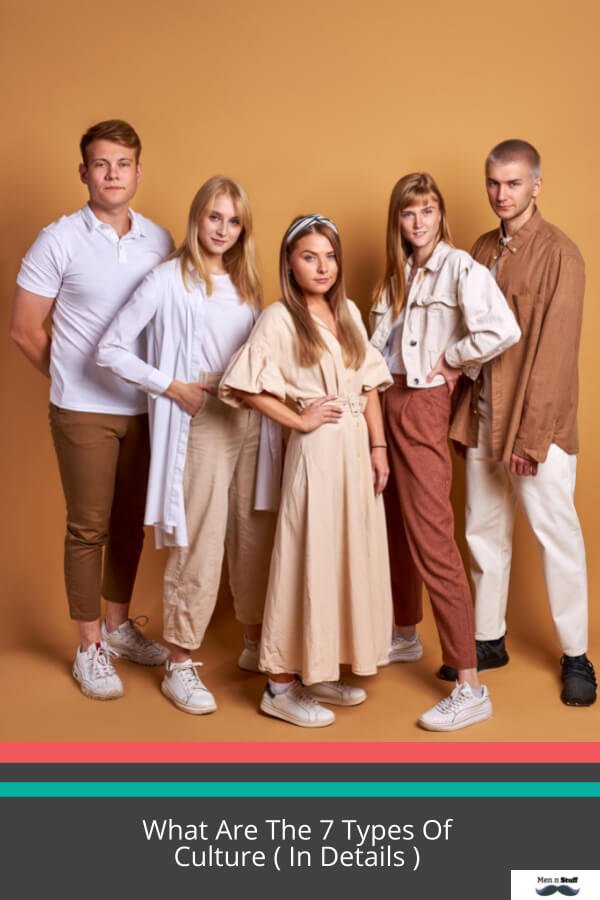Human cultures are vast and diverse, exceeding 7,000 worldwide. Examples include the Japanese culture with 125 million, and the Bengali culture with 230 million adherents. These cultures encompass unique customs, traditions, and languages, contributing to our global mosaic of diversity.

What Are The 7 Types Of Culture?
Culture is an intricate web of shared values, beliefs, and norms that shape an individual’s behavior and perception. It provides a matrix for personal identity and social integration. Here, we explore the seven types of culture, each with its unique characteristics and implications.
1. High Culture
High culture aligns with traditional conceptions of sophisticated taste or fine art, often associated with elites or intellectuals. This culture encompasses ballet, opera, classical music, philosophy, and poetry. Elements of high culture often require a certain level of knowledge or education to be fully appreciated.
2. Popular Culture
Contrary to High Culture, Popular culture or “Pop culture” appeals to the masses. It includes entertainment, trends, fads, and other phenomena that are widespread among the general population. Examples include popular music, mainstream news, sports, movies, and viral online content.
3. Subculture
A subculture is a smaller cultural group that exists within a larger culture but varies somewhat in its beliefs, norms, and values. Subcultures can form around specific interests, activities, age groups, or professions. Examples include bikers, hip-hop groups, and tech-enthusiast communities.
4. Counterculture
Countercultures are a type of subculture that deviate from or oppose, the norms and values of the wider society. They arise as a form of social or political protest and can drive societal change. Examples include the hippie movement of the 1960s or the punk subculture.
5. Material Culture
Material Culture refers to the physical objects, resources, and spaces that people use to define their culture. This includes buildings, furniture, clothing, artwork, tools, foods, and sacred spaces. It provides tangible evidence of cultural practices and historical events.
6. Non-Material Culture
In contrast to Material Culture, non-material culture comprises nonphysical components, including values, beliefs, behaviors, language, rituals, and social norms. It significantly impacts the way individuals perceive, interpret, and interact with the world.
7. Organizational Culture
Organizational culture refers to the collective values, beliefs, and principles of organizational members. It includes the shared expectations, values, and attitudes that drive the behavior of a group or organization’s members. Businesses, nonprofits, government institutions, and academic institutions often foster their organizational cultures.
In summary, understanding these diverse cultural types can help provide insight into societal dynamics, identity formation, and intergroup relations. Each culture has a distinctive role in shaping our world and our interpersonal interactions.
| Type of Culture | Definition |
|---|---|
| High Culture | Cultures associated with elites, classical art, and intellectuals. |
| Subculture | Small cultural group within a larger culture with different beliefs and values. |
| Pop Culture | Mass appeal culture including trends, fads, and entertainment. |
| Counterculture | Subculture deviating from or opposing societal norms. |
| Material Culture | Physical objects, resources, and spaces defining people’s culture. |
| Non-material Culture | Nonphysical components like values, beliefs, and behaviors that make up a culture. |
| Organizational Culture | Collective values, beliefs, and principles of organizational members. |
What is culture?
Culture is a complex and multifaceted concept that encompasses a wide range of human activities, beliefs, values, practices, and behaviors. It is the sum of shared knowledge, customs, traditions, art, language, religion, social norms, and other elements that characterize a particular group of people.
What Are Some Elements Of Culture?
Here are some key aspects of culture in detail:
- Shared Beliefs and Values: Culture often includes a set of beliefs and values that guide individuals’ and communities’ thoughts and actions. These beliefs can encompass religious, moral, and ethical principles, as well as ideas about family, community, and the world.
- Language: Language is a fundamental aspect of culture. It serves as a means of communication and expression, but it also carries with it a wealth of cultural knowledge, history, and identity. Different cultures often have their own languages or dialects.
- Customs and Traditions: Every culture has its customs and traditions, which can include rituals, ceremonies, festivals, and practices. These customs often play a significant role in shaping social interactions and marking important life events.
- Social Norms: Culture establishes the norms and rules that govern social behavior within a group. These norms dictate how people should behave in various social situations and what is considered acceptable or taboo.
- Art and Expression: Cultural expression takes various forms, including art, music, dance, literature, and architecture. These forms of expression often reflect the values, aesthetics, and history of a culture.
- Religion and Spirituality: Religion and spirituality are integral parts of many cultures. They provide a framework for understanding the world, morality, and the purpose of life. Different cultures often have their own religious beliefs and practices.
- Cuisine: Food and culinary traditions are essential components of culture. The types of food, cooking methods, and dining rituals can vary widely from one culture to another and often reflect the local environment and historical influences.
- Family Structure: The structure and dynamics of families can vary significantly between cultures. Some cultures prioritize extended family networks, while others emphasize nuclear families. Cultural norms also influence gender roles and expectations within the family.
- Dress and Attire: Clothing and fashion choices are often influenced by cultural norms and traditions. Traditional clothing can hold deep cultural significance and is often worn during special occasions or ceremonies.
- Education and Knowledge Transmission: Culture plays a role in how knowledge and skills are passed down from one generation to the next. This can involve formal education systems, apprenticeships, oral traditions, and storytelling.
- Socioeconomic Systems: Economic systems, such as capitalism, socialism, or communal ownership, can be influenced by cultural values and beliefs about wealth, work, and resource distribution.
- Globalization and Cultural Exchange: In today’s interconnected world, cultures often interact and influence one another through globalization, travel, and communication technologies. This can lead to cultural diffusion and the blending of traditions.
Different Types Of Cultures In America
Today, different types of cultures are all around us. Whether we’re eating a taco on the streets of Los Angeles or ordering Korean barbecue from a food cart outside Yankee Stadium in New York City, it seems as if every culture has an opportunity to be expressed and consumed virtually anywhere you go. In this blog post, I’ll take some time to examine what exactly defines cultural differences.
The first thing that might come to mind when one thinks about different types of cultures is how they vary based on social organization: for example, family-oriented vs individualistic; collectivist vs competitive; hierarchical vs egalitarian; cooperative versus possessive…etc etc etc… These ideals form the backbone upon which many different cultures are built and take shape.
Cultural Groups Examples
– family oriented vs individualistic
– collectivist vs competitive
– hierarchical vs egalitarian
(etc etc)
The first thing that might come to mind when one thinks about different types of cultures is how they vary based on social organization: for example, family-oriented vs individualistic; collectivist vs competitive; hierarchical versus egalitarian; cooperative or possessive. These ideals form the backbone upon which many different cultures are built and take shape. The following paragraphs will explore a few examples of cultural groups in order to better illustrate this point.
I’ll start with the Amish who live in Pennsylvania Dutch country near Lancaster County and follow up by taking a look at the Mennonites from Mexico’s Yucatan Peninsula who live in the state of Campeche.
The Amish are a group that has been living in Pennsylvania Dutch country for centuries, and who still speak German as their first language. They’re descendants of ethnic Germans from Switzerland, France, Austria, Bavaria, and other places where they were persecuted by Catholics because they didn’t believe Holy Communion should be given to infants or adults without being able to understand it. In order to preserve their faith against outside interference (and persecution), this culture has developed into a close-knit community with strong ties between family members and neighbors; these people take pride in farming on small plots of land which often produce organic crops like corn grown for livestock feed as well as flowers and herbs used both medicinally and in cooking.
– The Pennsylvania Dutch are a great example of an ethnic culture that has existed in one place for centuries, and who still speak German as their first language. They’re descendants of ethnic Germans from Switzerland, France, Austria, Bavaria, and other places where they were persecuted by Catholics because they didn’t believe Holy Communion should be given to infants or adults without being able to understand it. In order to preserve their faith against outside interference (and persecution), this culture has developed into a close-knit community with strong ties between family members and neighbors; these people take pride in farming on small plots of land which often produce organic crops like corn grown for livestock feed as well as flowers and herbs used both medicinally and in cooking.
References:
https://www.universal-translation-services.com/examples-of-cultures/
https://helpfulprofessor.com/examples-of-culture/

